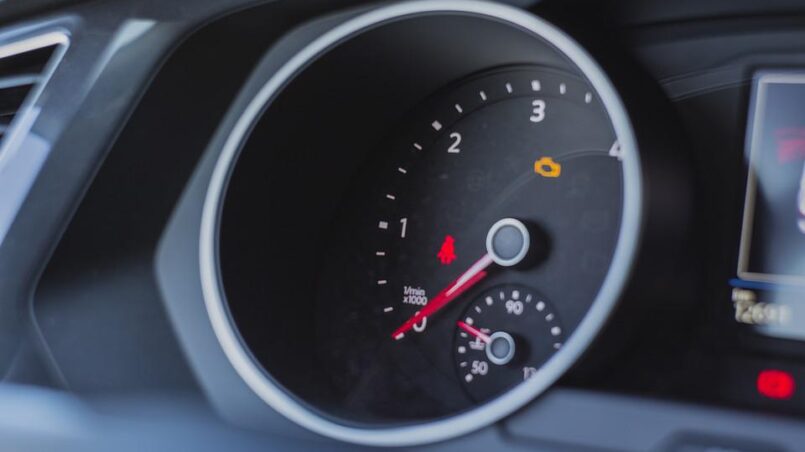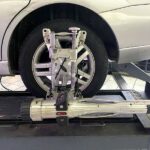Sometimes your car can heat up, or the engine might stop due to several reasons. What you need to do in such circumstances is contact a mechanic. If the car’s model is old, you’ll find yourself at the auto-repair shop quite often or on a regular basis. These problems are quite common, but at least you can identify them with the check engine light.
But how do you indicate there is a problem within the car? Well, cars don’t talk, but they come equipped with an indicator that can tell the driver that there is an issue. This indicator is the check engine light, also called a malfunction indicator lamp. It appears like an engine-shaped, orange icon, and flashes in the instrument cluster.
Not many people know why the light blinks and what to do when it does. In some cases, the flashing check engine light might be an indication of minor issues; other times, it may alert you of a serious problem. Read further to know about the malfunction indicator lamp (MIL) or check engine light (CEL).
What Does the Light Indicate?
Probably the first question on everyone’s mind is what do the symbols on a car’s dashboard mean and indicate? The check engine light may turn on and begin flashing due to many reasons. Note that the fault code that triggers the light is present in your car’s engine computer.
You can use a Bluetooth-powered device connected to an app to retrieve and check engine light codes. This will give you an idea of what is wrong with the car’s engine or other parts under the hood. The check light engine may illuminate due to the following problems:
Oxygen Sensor
The oxygen sensor is responsible for measuring the amount of unburnt oxygen in the vehicle’s exhaust system and sending this data to the car’s computer. The engine system regulates the fuel and air mixture entering the cylinders with the help of this data. If the sensor needs replacement, the check engine will indicate there is a problem.
If a problem occurs with the oxygen sensor, the engine will still keep on running. However, the car will burn more fuel than usual due to the fault. Besides, a bad oxygen sensor can also damage other components in the vehicle, such as spark plugs.
Spark Plugs
Spark plugs need electricity to ignite the mixture of fuel and air in a car’s cylinder; an ignition coil produces that electricity. Unlike classic cars that have only one coil, modern vehicles use one coil for each cylinder.
If there is a fault with the spark plugs or the ignition coil is malfunctioning, the check engine indicator will let you know. Note that if you don’t resolve this problem, you might face issues like lower gas mileage and lower performance level of the vehicle.
Fuel Cap
One of the most common reasons for the check engine light to turn on is a loose fuel cap. If the check light blinks just after you have filled the fuel tank, check the fuel cap. If it is loose, gasoline fumes will leave the tank.
Catalytic Converter
It is a component integrated into a car’s exhaust system and helps turn the carbon monoxide into carbon dioxide. You will find a catalytic converter in every classic car that operates on gasoline. A converter may fail while turning carbon monoxide into carbon dioxide and may lead to other problems.
For instance, the car might even heat up; hence, you’ll notice the engine-shaped icon flashing in the instrument cluster. It isn’t a costly fixture; just make sure to replace the converter before other components face problems.
Aftermarket Alarm
An aftermarket alarm can cause damage to your car if installed poorly. It can cause the engine light to turn on, drain your car’s battery, and even prevent the car’s engine from starting.
The alarm, if not installed properly, could go off when least expected. If you face such issues, have the alarm installed the right way again. You could even fix or replace the aftermarket alarm.
Understanding the Difference between CLE and other Indicators
Due to advancement in technology, many cars have other features that can also indicate when your car needs an oil change or when your car needs a break. Many people confuse these indicators as the check engine light, but these signals are different.
The light blinking on the gauge cluster may indicate that your car requires service. Hence, the service engine light doesn’t mean there is a problem; it is only a reminder that your car is due for maintenance or an oil change. The check engine light turns on when there is a complication that needs attention; the service engine soon light doesn’t indicate a severe issue.
Can You Turn it Off?
Some people find it a bit annoying to check engine light blinking and wonder if there is any way they can turn it off. Well, turning it off could make you forget there is an issue, and even if you do turn it off, the light would simply turn back on after some time.
Remember, the problem doesn’t go away by turning it off; the issue will remain until you find the problem. Your mechanic will decipher the check engine light codes (diagnose the problem) and fix the issue accordingly.
Can You Continue Driving while the Light is On?
Well, when the light turns on, it doesn’t turn your engine off immediately. You can continue driving, but it is always a good idea to check your vehicle. You could open the hood and see whether there is an issue with the spark plugs, or maybe the fuel cap is loose.
The question of whether you can continue driving depends on the severity of the case. If you can’t decipher the code, don’t drive with the check engine light on. Instead, contact your mechanic and get the car checked.
If there is an issue with the exhaust system or engine, driving the car could cause the engine to stop, heat up really quickly, or even result in the performance to drop. It’s better to stop driving and examine what the problem is to avoid all these severe problems.
In case a mechanic can’t come to your location, make sure to reduce the speed of your vehicle and find the nearest mechanic.
How Come it Turns on When You Put the Key In?
Many people worry about why the check engine light turns on when they put the key in. Well, this is completely normal as it only turns on, so you know it is working. As soon as you start the engine, the light turns off.
While driving, if it turns on again, it might indicate an issue that needs your attention.
Why Is Important to Have a Check Engine Light?
The reason is quite simple. You’ll know there is a complication that needs attention, and if you know the exact reasons why the light is blinking, you won’t have to worry about the mechanic cheating you.
It is a common problem that many car owners face. The mechanic might tell you there are other problems in the car while there is no issue. But, if you know how to decipher the light codes and what they tell, you will be able to avoid any extra costs and address the problems at an early stage.
Solution: Never Ignore the Check Engine Light
A common mistake many car owners commit is ignoring the check engine light often. Many drivers mask the dashboard light with a piece of black tape and keep driving as they don’t know why the check engine light turns on. However, ignoring the malfunction indicator lamp could cause problems in your vehicle that may require extensive repair.
Still wondering why ignoring the check engine light is a bad idea? First of all, whether it is a car or some other machine, problems do occur. You either have to solve the issues yourself or find someone to do it for you. If you leave a problem unsolved, this will result in further complications to occur and damage the whole system completely.
Not to mention, you’ll have to deal with further expenses in order to fix the issue. So, if the light blinks, first check the fuel cap. If it is loose, tighten it, and then continue your journey. However, if the light remains turned on, you may need an expert’s help.
Conclusion
The check engine light makes the driver feel safer knowing if anything goes wrong, the car will inform them. However, the driver should know what the check engine light is and what to do when it turns on.
Whenever you start the car, make sure to check whether the light turns on or not. If it doesn’t, you need to go to the mechanic right away and get the light fixed. Otherwise, you’ll never know if there is any issue within the engine or exhaust system. Visit BudgetMotorsReno.com and Blog.BudgetMotorsReno.com









